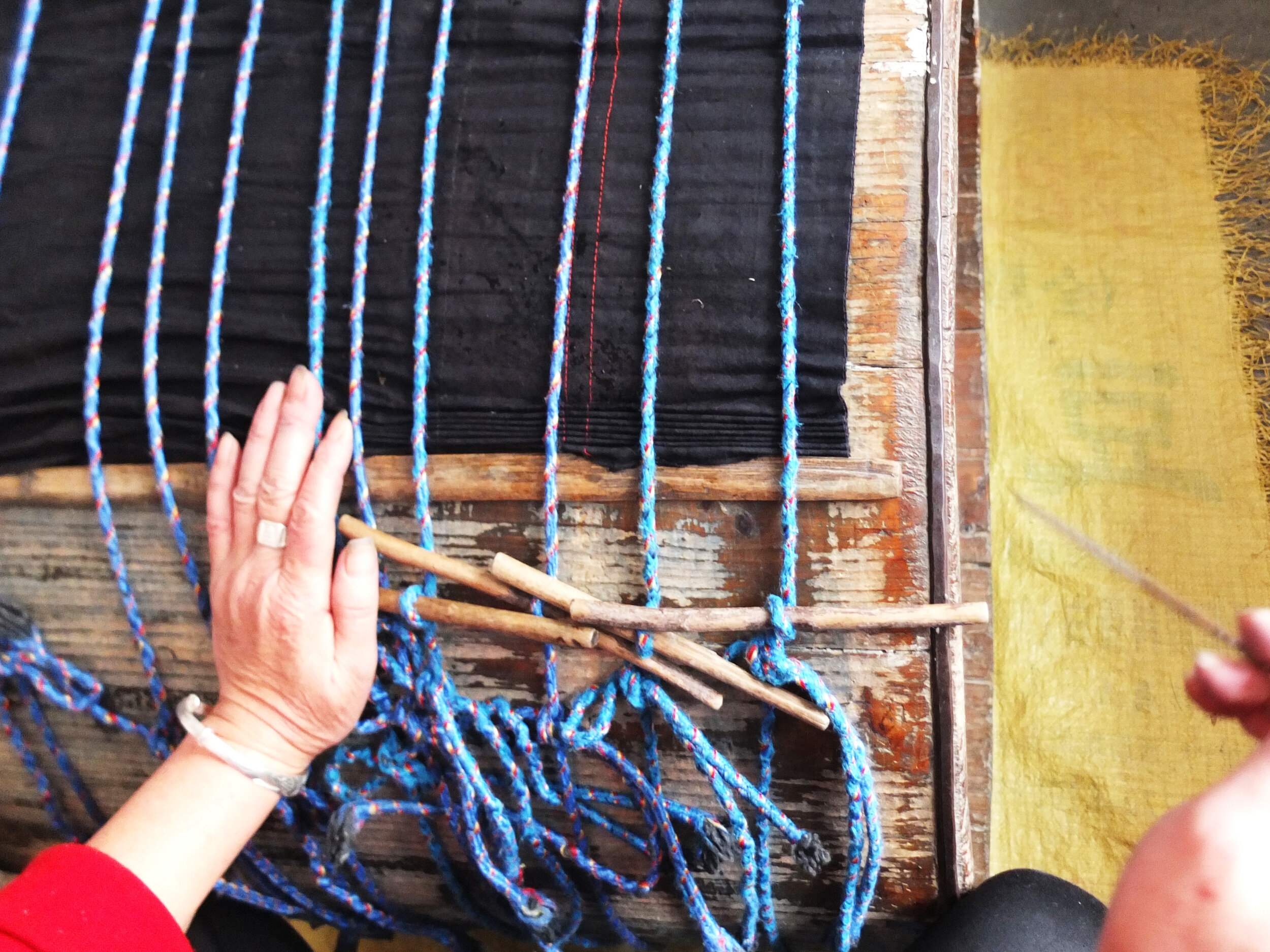Pleated Skirt, China
Miao people are scattered across Guizhou province in southwest China and each geographical area has adopted its own unique traditional dress. There is a saying that goes: “If you meet one hundred Miao, you will see one hundred different costumes.” There is one garment that almost all Miao women have in common: the indigo-dyed pleated skirt. In fact, some other minority ethnic groups also use pleated skirts to complete their costumes. Methods of making the pleated skirt vary from region to region. Each community’s skirt is a reflection of the surrounding environment from the availability of dyeing ingredients, choice in surface treatments, to the set-up of the pleating process.
Shidong town is known for making flawless satin stitches and garments heavily adorned with silverware. On a recent visit, I met pleating expert Kai Jin who showed me their local hand-pleating technique. In this town, they use a barrel as a pleating platform. The cloth is wrapped around a barrel, secured with ropes, and then dampened with water from a straw brush. Pleats are made by pinching the cloth with a long pin. Once the pleats are made, ropes are firmly tied around the barrel to secure the pleats in place. The cloth is left to dry for several days before the ropes are removed and the fabric is unwound. Later, a waistband is stitched onto the skirt fabric, which requires the craftsman to carefully pick up the peak of each fold and then stitch it on. Finally, the skirt is rolled up tightly and bound with a cloth rope, setting the pleats firmly into place.
Decorating the skirt
In Shidong, a ribbon with three red lines is sewn onto the fabric before pleating. Older generations recall that the three lines represent three rivers in China: the Yellow River (Huang He), Yangtze River (Cháng Jiāng), and Qingshui Jiang, which starts from Southeast part of Guizhou province. In Gedong, pleated skirts worn by girls between the ages of 17 and 20 are decorated with a striped handwoven silk panel, which is attached before the pleating process. It is then decorated with a cross-stitching motif that depicts human figures on horseback crossing a bridge. This community chooses to pair this signature skirt with a red-and-white densely embroidered top to signify the youthfulness of the girls who wear them. For the Miao, these textile traditions provide a visual record of their history where no written one exists. They are people who have managed to preserve their cultural identity and customs.





